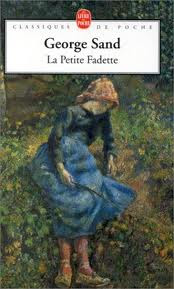The Invention of Hugo Cabret—Brian Selznick
“As I
look out at all of you gathered here, I want to say that I don’t see a room
full of Parisians in top hats and diamonds and silk dresses. I don’t see
bankers and housewives and store clerks. No, I address you all tonight as you
truly are: wizards, mermaids, travelers, adventurers, and magicians. You are
the true dreamers.” (506)
I worked in
a school during the 2009-2010 school year, serving in my capacity as an
AmeriCorps member. I was specifically working with students on reading and
reading comprehension, which was perfect in conjunction with my overwhelming
love of books. I’d seen the book several times before that point, but as a
hardbound book, it was decidedly more expensive, so I had bypassed it several
times. This time in AmeriCorps was my first actual introduction to The Invention of Hugo Cabret, and I
actually had the opportunity to begin reading the book – although I never
finished it.
This year at
the annual Scholastic customer appreciation warehouse sale – and in
consideration of recently having acquired a shiny new job – I treated myself.
Now that I
work for an organization that is interested in different types of literacy and
in turn, different formats of writing, I’m especially excited about a book like
this. Not quite graphic novel, the book is innovative in combining pages of
hand-drawn illustrations with pages of text. It’s an interesting, engaging way
of storytelling. The formatting of the pages with text was reminiscent of the
silent movie captions, which was a great tie-in to the theme of the book.
Partially
based around the actual life of filmmaker George Melies, The Invention of Hugo Cabret tells the story of…you guessed it,
Hugo Cabret. Hugo is a young boy who lives in a Paris train station and cares
for the clocks. He used to be apprenticed to his uncle, who was the official
Timekeeper, and who disappeared a few months back, which is just as well for
Hugo because his uncle was a drunk. Hugo’s father died in a fire, trying to
figure out how to fix an automaton that he found in the attic of the museum where
he worked. In the ashes, Hugo had found the automaton – which he calls the “mechanical
man” - and was now working to fix him, stealing small toys and pieces from the toymaker
who sold toys in the train store. The toymaker has a young goddaughter who he
cares for, who is called Isabelle, and who befriends Hugo. When the toymaker
discovers that Hugo has been stealing from him, he steals Hugo’s notebook and
finds it filled with sketches of the automaton. For some reason, he gets very
emotional at the sight and refuses to return the notebook to Hugo, although he
offers to consider it if Hugo will work at his stand – sweeping, cleaning up,
and fixing broken mechanical toys. The story progresses and we learn more about
Hugo, Isabelle, and the toymaker.
A great
story, wonderfully interwoven with dynamic illustrations, this book is a good
selection for any age.



Comments
Post a Comment